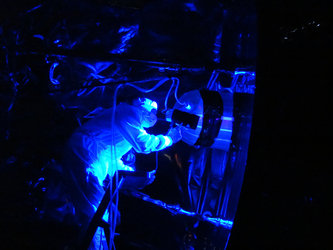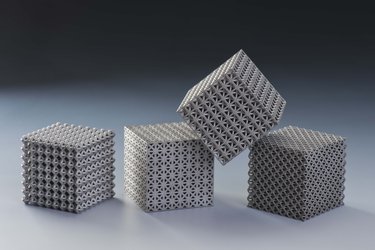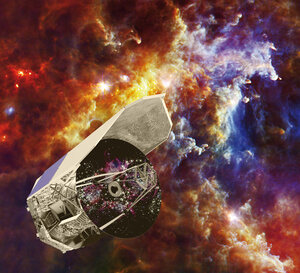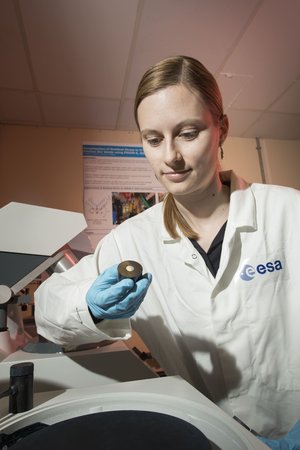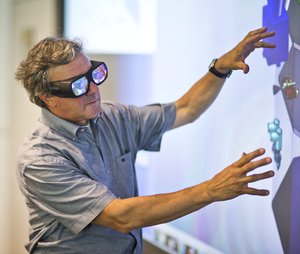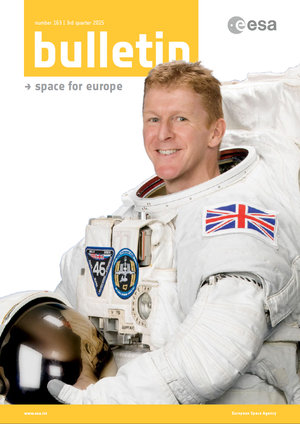Rethinking the stuff that satellites are made of
Laurent Pambaguian, Materials Technology Engineer
The initial idea was simple: numerous new materials and manufacturing processes are emerging, with the potential to radically transform our industrial landscape, which ESA needed to investigate. The result was our latest cross-cutting initiative, called Advanced Manufacturing.
This takes in 3D printing – offering design flexibility along with huge reductions in lead time and cost – as well as advanced welding techniques, hybrid composites such as titanium matrix enforced with silicon carbide fibres, plus materials like thermosets and thermoplastics and foam metals.
There’s lots of spin-ins from terrestrial industry, but a few developments are unique to space, like silicon carbide, a ceramic combination of silicon and carbon, holding great advantages of strength and temperature and radiation resistance.
Silicon carbide (SiC) is typically used by terrestrial industry to make small products like cutting tools or pump bearings. More than a decade ago ESA harnessed SiC to make what was then the largest mirror to be flown in space – the Herschel infrared telescope’s main 3.5-m diameter mirror, which at just a third the mass of the Hubble Space Telescope’s main mirror, provides twice the observing area. There was simply no other way to construct this mirror: using glass would have been much too heavy.


Access the video
It was this experience that went on to inform Advanced Manufacturing, in particular its status as a cross-cutting initiative, operating across different technology programmes, levels and domains. This was because, for silicon carbide, we’d needed to devise different processes on a step by step basis – shaping, sintering, brazing, polishing – along with quality verification methods.
It wasn’t just a single new technology being developed, but an entire new end-to-end manufacturing chain. Fast forward to today and silicon carbide is flown on multiple space missions. So this success gives Advanced Manufacturing an example to emulate - it shows ESA was performing Advanced Manufacturing even before we realised it!
It’s important to characterise the properties of these new materials
It’s important to characterise the properties of these new materials and the underlying physics of these processes to a deeper level than usual. So that means we are making use of Networking/Partnering Initiative researchers, harnessing the academic sphere to improve understanding within key areas. We have also established a new facility at ESA’s Harwell centre in the UK, the Advanced Manufacturing Laboratory to work at a lower technology readiness level than our standard, when we simply take what industry has already produced.
At Harwell we can do things like characterise the different kinds of powders used as feedstock for 3D printing processes – because we can’t be sure to have a good product at the end if we don’t have full knowledge what has gone into it.
And then, beyond manufacturing and verification, we have also begun to look into system impacts: what would it mean in terms of the spacecraft design to apply these emerging technologies? We’ve carried out sessions in ESA’s Concurrent Design Facility, focused on the question of achieving multi-functionality of spacecraft elements, combining several different functions into one part using Advanced Manufacturing. It’s almost like a mission pre-Phase A study, setting requirements, but for a single challenging item of hardware.
For instance, ESA’s Athena X-ray telescope will require numerous precisely-aligned stacks of silicon wafers – a big piece of hardware, very complex in terms of requirements. But can we fulfill them in one go, by adding in the sensors, actuators and heaters we need, and actually printing the required electrical harness through the structural parts? If we can demonstrate this methodology through this kind of one-of-a-kind item, then the same approach could be adapted for many others, resetting the entire design architecture for spacecraft.



